
Top Reasons to Visit Valley of Flowers National Park in 2024
Nestled in the heart of Uttarakhand, the Valley of Flowers National Park stands as a testament to nature’s breathtaking beauty. This hidden gem in the Himalayas attracts nature enthusiasts and adventure seekers from across the globe, offering a mesmerizing display of vibrant alpine flowers set against a backdrop of towering snow-capped peaks. As a UNESCO World Heritage Site, the park has gained recognition for its exceptional natural beauty and ecological significance.
For those planning an India hike in 2024, the Valley of Flowers trek presents an unparalleled opportunity to explore one of the country’s most stunning landscapes. Visitors can expect to witness a kaleidoscope of colors as they journey through meadows filled with rare and exotic flora. Beyond its natural splendor, the park holds cultural and spiritual importance, houses diverse wildlife, and provides a challenging yet rewarding trekking experience. Whether one is a seasoned trekker or a first-time visitor, the Valley of Flowers National Park promises an unforgettable adventure in the lap of nature.
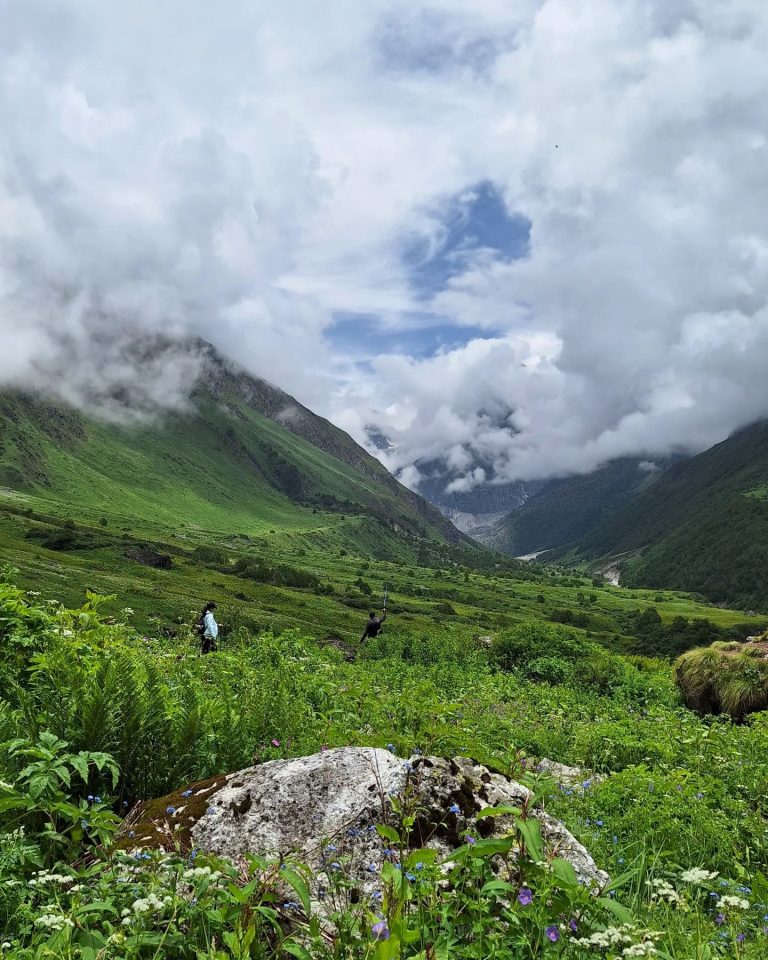
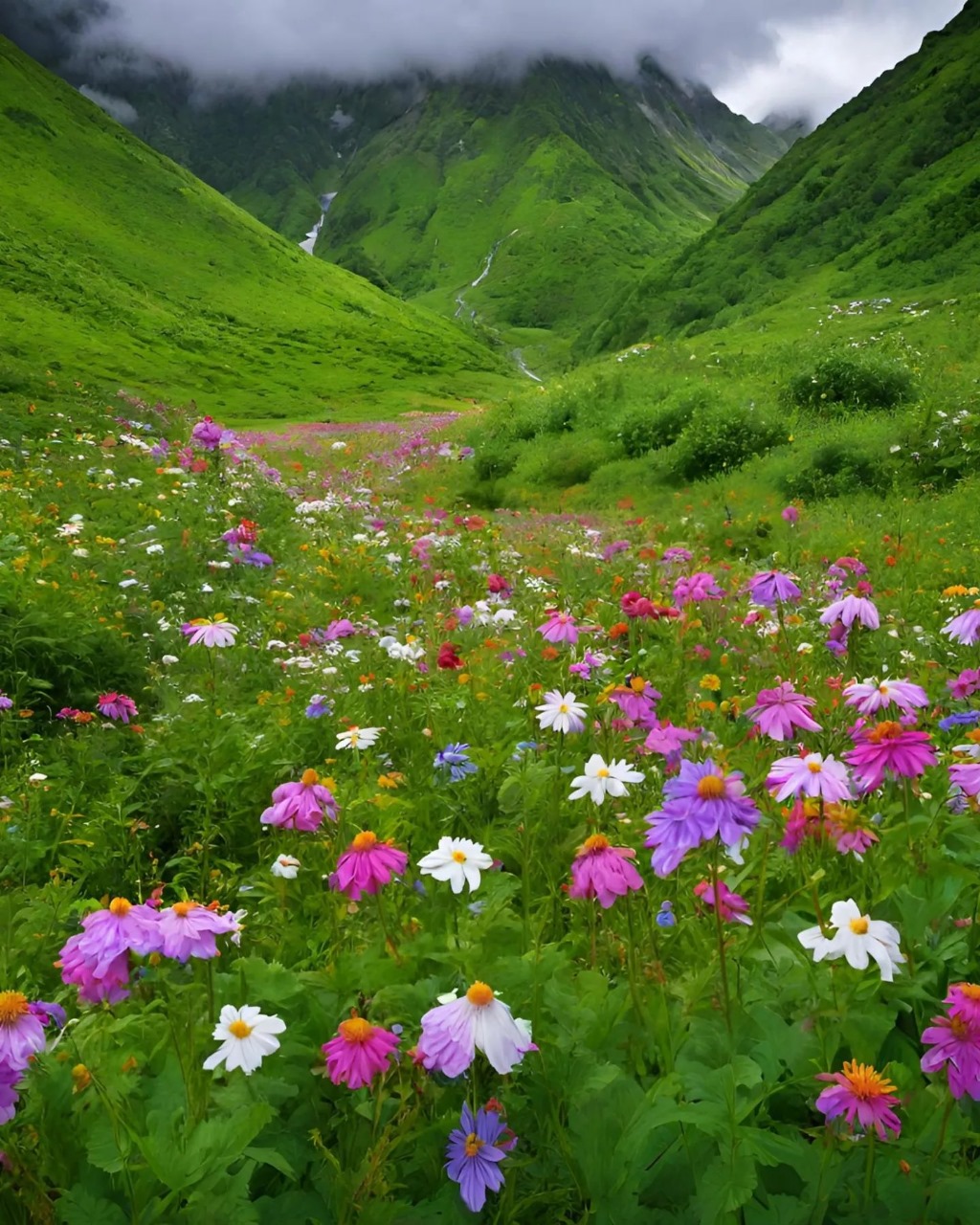
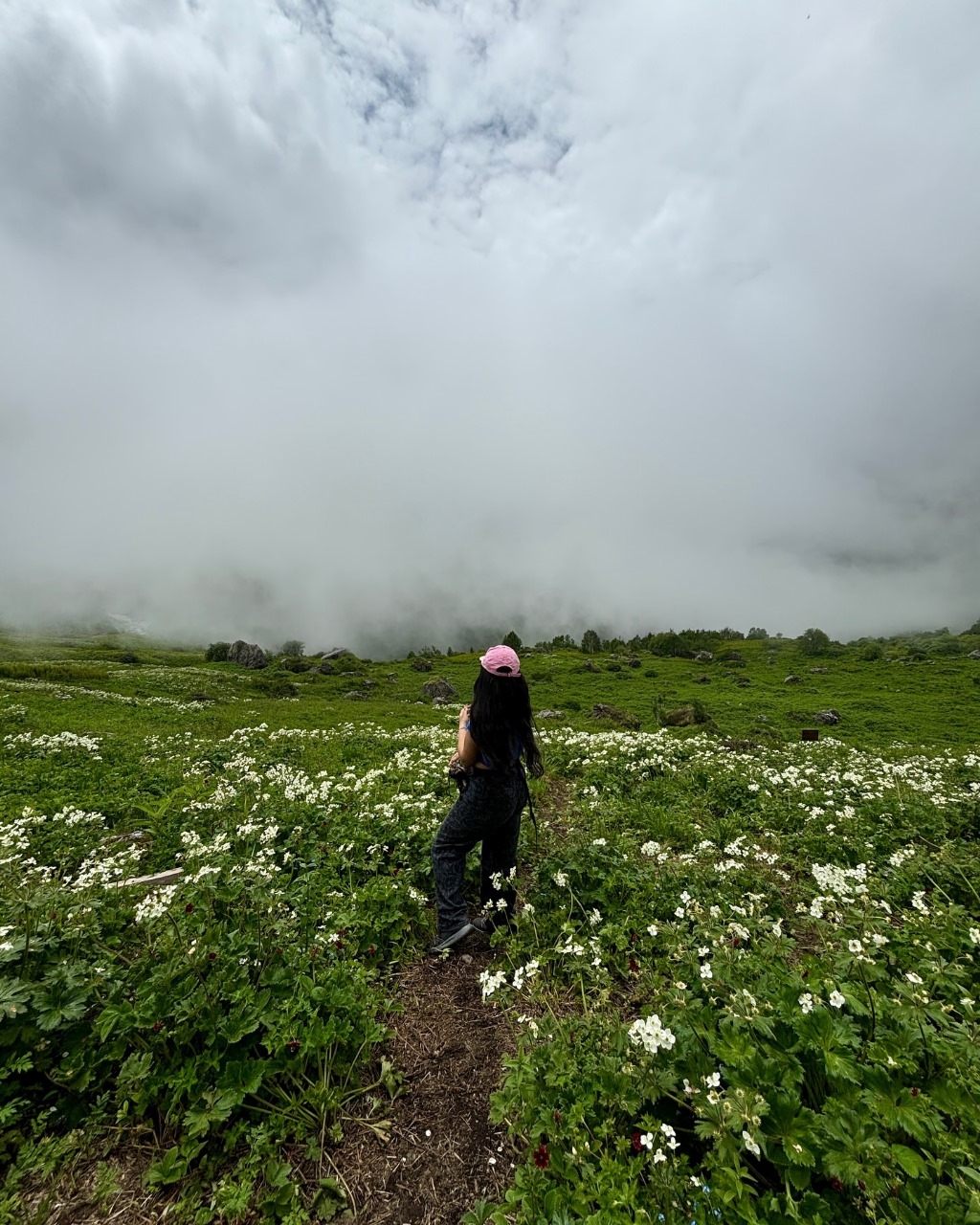
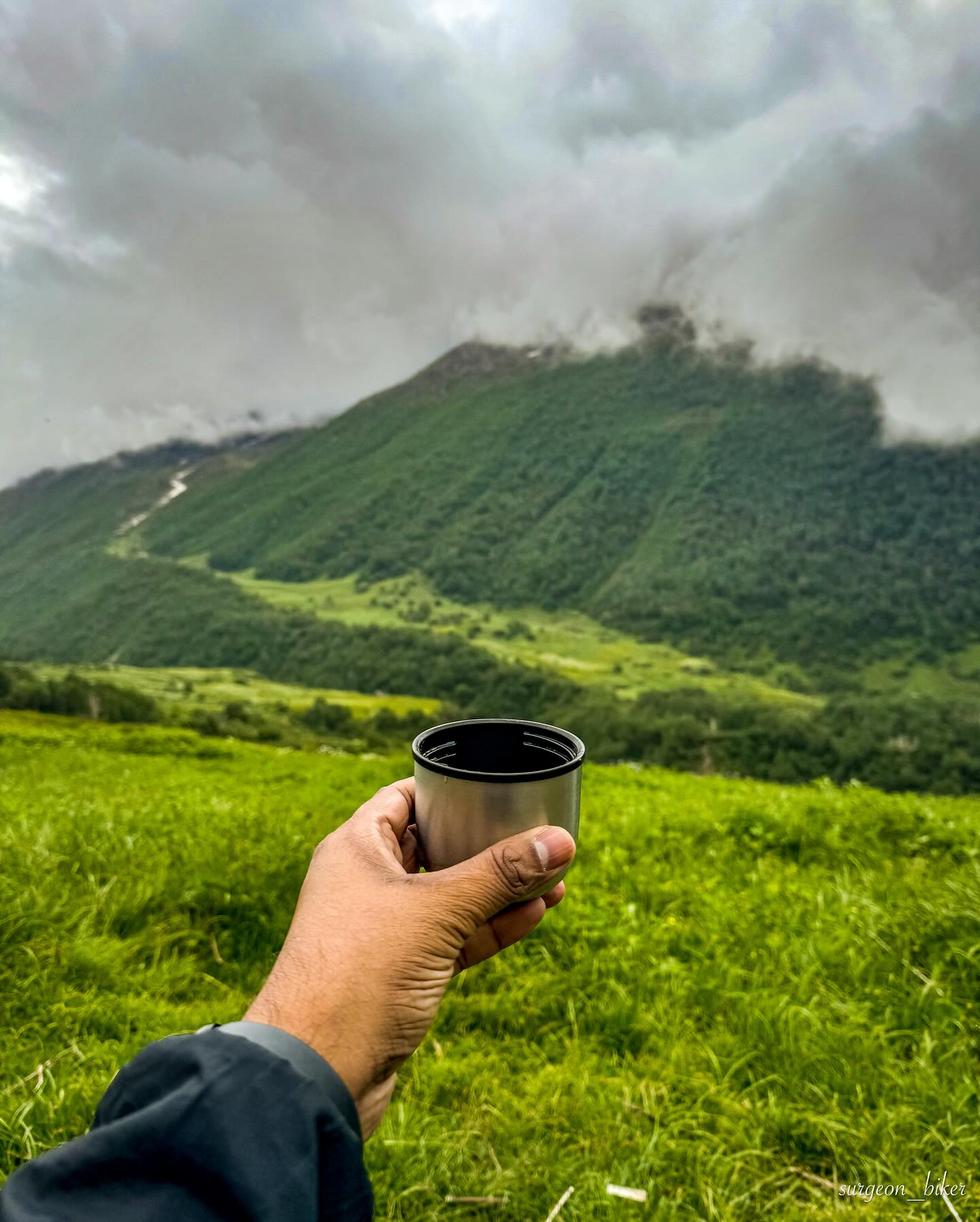
Stunning Natural Beauty of the Valley
The Valley of Flowers National Park stands as a testament to nature’s breathtaking artistry, offering visitors an unparalleled visual feast. This UNESCO World Heritage Site, nestled in the Western Himalayas of Uttarakhand, showcases a stunning blend of natural wonders that captivate the senses and leave an indelible impression on all who venture into its embrace.
Colorful Alpine Meadows
The valley’s lush green meadows transform into a vibrant tapestry of colors during the flowering season. Visitors are treated to a mesmerizing display as the ground becomes carpeted with a diverse array of wildflowers. Orchids, poppies, primulas, marigolds, daisies, and anemones paint the landscape in a kaleidoscope of hues. This colorful spectacle stretches across the valley, creating a natural canvas that changes with the progression of time and seasons.
The diversity of flora in the Valley of Flowers is truly remarkable. A comprehensive study conducted over a decade by C.P. Kala revealed that the park is home to 520 species of higher plants, including 498 flowering plants. This rich biodiversity reflects the valley’s unique position as a transition zone between the Zanskar and Great Himalayas ranges, as well as between the Eastern and Western Himalayan flora.
Rare and Exotic Flora
The Valley of Flowers is renowned for its collection of rare and exotic plant species, many of which are endemic to the region.
The valley is also home to numerous medicinal plants, including Dactylorhiza hatagirea, Picrorhiza kurrooa, Aconitum violaceum, Polygonatum multiflorum, Fritillaria roylei, and Podophyllum hexandrum. These species contribute to the valley’s importance as a biodiversity hotspot and a treasure trove of medicinal resources.
The stunning floral display is set against the backdrop of towering snow-capped Himalayan peaks, creating a scene of unparalleled beauty. The contrast between the colorful meadows in the foreground and the majestic mountains in the background offers a visual spectacle that draws photographers and nature enthusiasts from around the world.
The valley’s landscape is further enhanced by the presence of sub-alpine forests of birch and rhododendron, which cover parts of the park’s area . These forests not only add to the scenic beauty but also play a crucial role in retaining moisture and snow, supporting a diverse range of floral and faunal communities.
The Pushpawati River, flowing through the center of the Valley of Flowers, adds another dimension to its ethereal beauty. The river’s crystal-clear waters meander through the landscape, creating a soothing soundtrack to accompany the visual splendor.
Best Time to Visit in 2024
The Valley of Flowers National Park opens its gates to visitors from June 1, 2024, to October 31, 2024. This period offers nature enthusiasts and trekkers the opportunity to witness the valley’s stunning transformation throughout the seasons. However, to experience the valley in its full glory, it’s essential to plan the visit during the optimal months.
Peak Blooming Season
The peak blooming season in the Valley of Flowers typically occurs from mid-July to mid-August. During this time, the valley explodes with color, presenting a mesmerizing tapestry of flowers that carpet the meadows. Visitors can expect to see a wide variety of flora, including rare and exotic species such as the Blue Poppy.
July marks the beginning of the blooming season, with the valley coming alive after the snow melts. Early July offers a unique opportunity to witness the transition from snow-
covered landscapes to vibrant floral meadows. As the month progresses, the valley becomes increasingly colorful, with a plethora of wildflowers in full bloom.
August stands out as the prime month for flower enthusiasts. The valley reaches its zenith of beauty, with maximum flowers in terms of variety and quantity. This period is ideal for photography and experiencing the full splendor of the alpine flora.
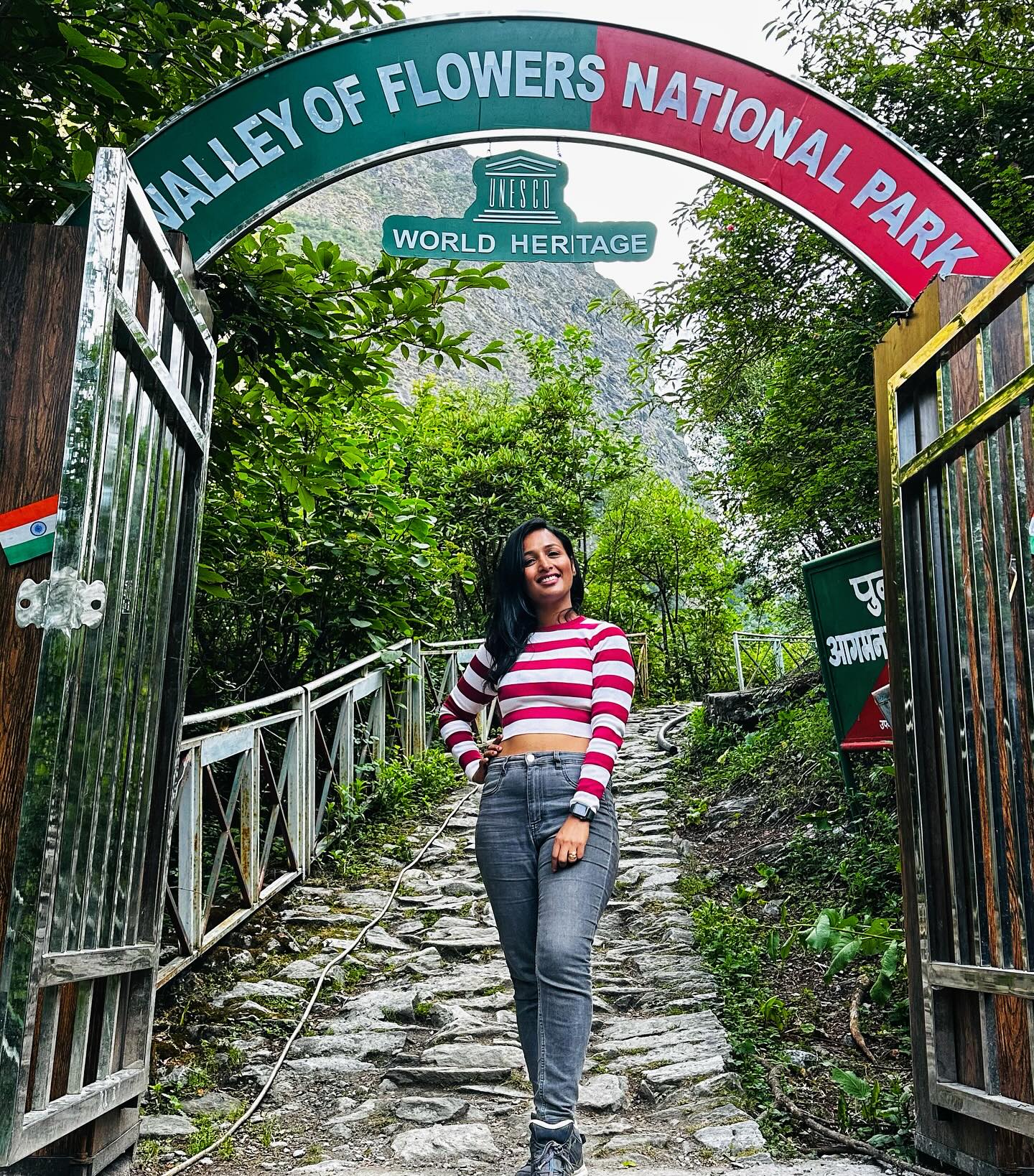
Weather Conditions
The weather in the Valley of Flowers varies significantly throughout the visiting season, influencing the trekking experience and the floral display.
In July, the average temperature in Ghangaria, the base camp for the Valley of Flowers trek, ranges from 4.5°C (40.1°F) to 10.4°C (50.7°F) [12] . The region receives considerable rainfall, with an average precipitation of 230mm (9.1 inches). This rainfall contributes to the lush greenery and vibrant colors of the flowers.
August sees similar temperatures, with averages ranging from 4.6°C (40.3°F) to 10.2°C (50.4°F) in Ghangaria. The precipitation remains high, with an average of 217mm (8.6 inches) of rainfall. The monsoon clouds hang low during this period, creating a mystical atmosphere in the valley.
Crowd Levels
The popularity of the Valley of Flowers trek means that visitor numbers can significantly impact the experience. Understanding the crowd levels can help in planning a more enjoyable visit.
July, particularly the first half, sees fewer crowds compared to the peak season . This makes it an excellent time for those who prefer a less crowded trail and a more serene experience. However, it’s important to note that the full bloom may not have started in early July.
August, being the peak blooming season, attracts the highest number of visitors The trails and campsites can get quite crowded, especially on weekends. For those planning an August visit, it’s advisable to time the trek on weekdays to avoid the largest crowds
September offers a balance between floral beauty and reduced crowd levels. As the peak season winds down, visitors can enjoy a more peaceful experience while still witnessing the lingering beauty of late-blooming flowers.
August, being the peak blooming season, attracts the highest number of visitors. The trails and campsites can get quite crowded, especially on weekends. For those planning an August visit, it’s advisable to time the trek on weekdays to avoid the largest crowds.
September offers a balance between floral beauty and reduced crowd levels. As the peak season winds down, visitors can enjoy a more peaceful experience while still witnessing the lingering beauty of late-blooming flowers.
EMI/Pay Later Facilities
For those seeking a unique experience, Team Soulmovers offers trek packages to the Valley of Flowers, with exciting options such as EMI and pay later facilities. This allows visitors to plan their trip with greater flexibility and convenience.
Trekking Experience and Difficulty Level
Trek Route Overview
The trek covers a distance of approximately 38 kilometers over four days, with daily altitude gains of around 2,000 feet. The route includes a mix of gradual and steep ascents, testing trekkers’ endurance and stamina. The journey begins at Govindghat and proceeds to Ghangaria, which serves as the base camp for both the Valley of Flowers.
From Ghangaria, trekkers embark on a 4-kilometer journey to the Valley of Flowers. The actual distance covered within the valley depends on individual exploration preferences and physical capabilities.
Fitness Requirements
The Valley of Flowers trek is categorized as a moderate difficulty trek, making it more challenging than easy-moderate treks like Kedarkantha and Dayara Bugyal [14] https://indiahikes.com/valley-of-flowers. To prepare for this trek, individuals should aim to comfortably run 5 kilometers in under 40 minutes before embarking on the journey. This level of fitness helps trekkers handle the daily distance and altitude gains more effectively.
Physical preparation should focus on:
- Cardiovascular endurance
- Leg strength
- Stamina building
Regular exercise routines, including jogging, fast walking, and strength training, are crucial for preparing the body for the trek’s demands [16] https://www.quora.com/How-prepared-should-we-be-to-trek-the-Valley-of-Flowers-Uttarakhand. It’s important to note that the trek requires strength and stamina more than cardiovascular training alone.
Safety Considerations
While the Valley of Flowers trek is generally considered safe due to its well-established trails and frequent use by pilgrims, there are several safety aspects to consider:
- Weather Conditions: The weather in the region can be unpredictable. Trekkers should be prepared for sudden changes and carry appropriate gear.
- Trail Conditions: During monsoon season, trails can become slippery. Extra caution is needed, especially on steep sections.
- Medical Facilities: While basic medical assistance is available in Joshimath, major medical emergencies require transportation to hospitals in Srinagar or Dehradun, which are 8-9 hours away from the base camp.
- COVID-19 Precautions: Trekkers should carry necessary documents, including e-passes and medical certificates. Personal hygiene items like sanitizers, masks, and gloves are essential.
For those seeking a guided experience, Team Soulmovers offers trek packages to the Valley of Flowers with flexible payment options, including EMI and pay later facilities. This allows trekkers to enjoy the adventure while managing their finances conveniently.
Cultural and Spiritual Significance
The Valley of Flowers region holds immense spiritual significance, particularly due to the presence of https://www.thesearchingsouls.com/valley-of-flowers-and-hemkund-sahib/ . This sacred site is believed to be the place where the tenth and final living Guru of Sikhism, Shri Guru Gobind Singh, meditated until achieving union with God .
The Gurudwara, shaped like an inverted lotus, sits by the banks of an alpine lake surrounded by seven mountain peaks, a setting that aligns with the description in Guru Gobind Singh’s book “.
Visitors may:
- Take a holy dip in Hemkund Lake (also known as Lokpal Lake)
- Offer prayers at the Gurudwara
- Partake in the free communal meal (langar) of warm khichdi and sweet chai.
Local Legends and Folklore
The Valley of Flowers and its surrounding areas are steeped in rich mythology and local legends. One popular belief suggests that the valley is inhabited by fairies or celestial beings who protect its enchanting beauty. This myth warns that those who venture too far into the valley risk being carried away by these mystical entities.
Another significant legend revolves around the concept of “Nandankanan.” According to Hindu mythology, the gods, inspired by the earth’s beauty, showered flowers upon the valley, transforming it into a paradise on earth. This celestial garden is often associated with Lord Indra, adding to the spiritual allure of the region.
Conservation Efforts
The cultural and spiritual significance of the Valley of Flowers has played a crucial role in its conservation. Since 1983, when conservation efforts began, the valley has been largely protected from anthropogenic pressures https://www.deccanherald.com/science/protecting-valley-flowers-2075177. The Uttarakhand State Forest Department, in collaboration with local communities, actively participates in conservation programs.
Key conservation measures include:
- Strict monitoring of access routes to the park
- Banning of mountaineering and adventure-based activities since 1983
- Restrictions on grazing within the park
- Prohibition of developmental activities like hydro projects
These efforts have helped maintain the valley’s pristine habitat and rich biodiversity. The park is home to numerous globally threatened plant species.
The conservation of this area not only preserves its natural beauty but also protects its cultural and spiritual heritage, ensuring that future generations can continue to experience the divine beauty and serenity of the Valley of Flowers.
Wildlife and Biodiversity
Despite its relatively low density of wildlife, the Valley of Flowers National Park is home to several rare and endangered species. Notable among them are the Asiatic black bear, snow leopard, and brown bear. The park also hosts various bird species, offering excellent bird-watching opportunities.
The park also hosts several other mammalian species, including:
- Northern plains gray langur
- Red giant flying squirrel
- Red fox
- Himalayan weasel
Bird Watching Opportunities
The Valley of Flowers is a paradise for bird watchers, with a variety of bird species inhabiting the park’s diverse ecosystems. Some of the notable species include the Himalayan monal, pheasants, snow partridges, and various species of finches and thrushes. The best time for bird-watching is early in the morning when the birds are most active. Visitors are encouraged to bring binoculars and a bird guidebook to make the most of their bird-watching experience.
Bird enthusiasts can expect to see a variety of species, including:
- Lammergeier
- Himalayan vulture
- Yellow-billed and Red-billed choughs
- Koklass pheasant
- Himalayan monal pheasant (nationally listed)
- Snow pigeon
Ecological Importance
The Valley of Flowers holds significant ecological importance due to its diverse alpine flora and fauna. The park represents the Western Himalayan alpine shrub and meadows ecoregion, showcasing a rich variety of plant species https://en.wikipedia.org/wiki/Valley_of_Flowers_National_Park . Many of these plants are considered threatened, with some not recorded outside of Uttarakhand https://en.wikipedia.org/wiki/Valley_of_Flowers_National_Park.
The park’s ecological significance extends to its role in preserving endangered wildlife. It provides a crucial habitat for species like the snow leopard and Himalayan musk deer, contributing to the conservation of these threatened animals https://whc.unesco.org/en/list/335/.
The valley’s unique biodiversity has raised concerns among experts. Recent observations have noted changes in plant species distribution and a reduction in snow cover https://timesofindia.indiatimes.com/city/dehradun/biodiversity-in-valley-of-flowers-undergoing-changes/articleshow/65297756.cms.
These shifts in biodiversity highlight the need for ongoing research and conservation efforts to protect this delicate ecosystem.
For visitors interested in exploring the Valley of Flowers’ rich biodiversity, Team Soulmovers offers trek packages with flexible payment options, including EMI and pay later facilities. This allows nature enthusiasts to experience the valley’s ecological wonders while managing their finances conveniently.
Practical Tips for Visitors
Accommodation Options
Visitors to the Valley of Flowers have several accommodation choices, with Ghangaria serving as the primary base camp. While luxury options are limited due to the seasonal nature of tourism, decent-sized rooms with attached toilets and hot water facilities are readily available. The tiny village offers a GMVN Guest House, a Gurudwara, luxury tents, and budget accommodations.
For those seeking alternatives, Govindghat provides a variety of affordable options, including a Gurudwara, hotels, and resorts. Joshimath also offers a GMVN guest house and numerous other accommodation choices. Prices in Ghangaria typically range from Rs. 500 to 3000, depending on preferences.
Permits and Regulations
To enter the Valley of Flowers National Park, visitors must obtain a permit, available at the park entrance. The standard permit is valid for three days and costs Rs. 150 for Indian nationals and Rs. 600 for foreign nationals. After the initial three days, additional permits can be purchased at Rs. 50 per day for Indians and Rs. 250 per day for foreigners.
Park timings are from 7:00 AM to 5:00 PM, with the last entry at 2:00 PM. Visitors must exit by 5:00 PM or sunset at the latest, as overnight stays and camping within the valley are prohibited. It’s crucial to carry identification cards, such as a driving license or voter ID, along with a passport-sized photograph and a medical certificate confirming trekking fitness.
What to Pack
Given the unique environment of the Valley of Flowers, packing appropriately is essential. Here’s a list of recommended items:
Clothing:
- Two pairs of lightweight trousers (one for trekking, one for evenings)
- One pair of shorts
- Two lightweight fleeces or wool jumpers
- A woolen hat for mornings and evenings
Footwear:
- A good pair of trekking shoes with ankle support
- Comfortable Sports Shoes
Rain protection:
- Lightweight umbrella or poncho (as it rains almost daily in July and August)
Accessories:
- Sunglasses (sun shines brightly during the day)
- Camera with extra batteries (due to irregular electricity)
- Small torch with spare batteries (essential as there’s no electricity after 9 PM)
- Water bottle
- Walking stick (can be purchased locally)
Backpacks:
- A proper-sized backpack (40 to 60 L) with good waistline and back support
- A day pack (15-20 L) for daily treks
Miscellaneous:
- Toiletries and sun protection cream
- Dry fruits, cookies, and high-energy, low-weight food items
- Basic medicines including pain killers and antibiotics
Remember, plastic items are banned, and littering is not allowed inside the valley. Visitors are responsible for bringing their garbage back . For those interested in exploring the Valley of Flowers, Team Soulmovers offers trek packages with exciting EMI and pay later options, making the adventure more accessible.
Conclusion
The Valley of Flowers National Park offers a mesmerizing blend of natural beauty, spiritual significance, and ecological importance. Its vibrant alpine meadows, rare flora, and diverse wildlife create an unforgettable experience for nature lovers and adventure seekers alike. The trek to this hidden gem provides a unique opportunity to witness the Himalayan landscape in all its glory, while also offering a chance to explore the cultural richness of the region.
As visitors plan their journey to this enchanting destination, it’s crucial to consider the best time to visit, prepare adequately for the trek, and respect the park’s conservation efforts. The Valley of Flowers not only captivates with its stunning vistas but also plays a vital role in preserving unique ecosystems and endangered species. Book Valley of flowers now and pay after trek https://www.soulmovers.in. Limited time offer. This magical destination promises an adventure that will leave lasting memories and a deeper appreciation for the wonders of nature.
FAQs
- What makes the Valley of Flowers worth visiting?The Valley of Flowers, set at an altitude of approximately 3,600 meters above sea level, is renowned for its unique and diverse wildlife. Visitors can encounter rare species such as the gray langur, flying squirrel, Himalayan weasel, black bear, red fox, lime butterfly, snow leopard, and Himalayan monal among others.
- When is the ideal time to visit the Valley of Flowers?The optimal period to explore the Valley of Flowers is from July through September, when the valley is vibrant with blooming flowers. The national park is accessible to the public from June 1 to October each year.
- What distinguishes the Valley of Flowers National Park?Located in the high West Himalaya in India, the Valley of Flowers National Park is famous for its picturesque meadows filled with endemic alpine flowers and its stunning natural scenery. It also serves as a habitat for several rare and endangered species, including the Asiatic black bear, snow leopard, brown bear, and blue sheep.
4. How much time is needed to explore the Valley of Flowers?A complete trek in the Valley of Flowers typically requires 6 days, starting from Rishikesh. This duration allows ample time to fully experience the natural beauty and biodiversity of the park.

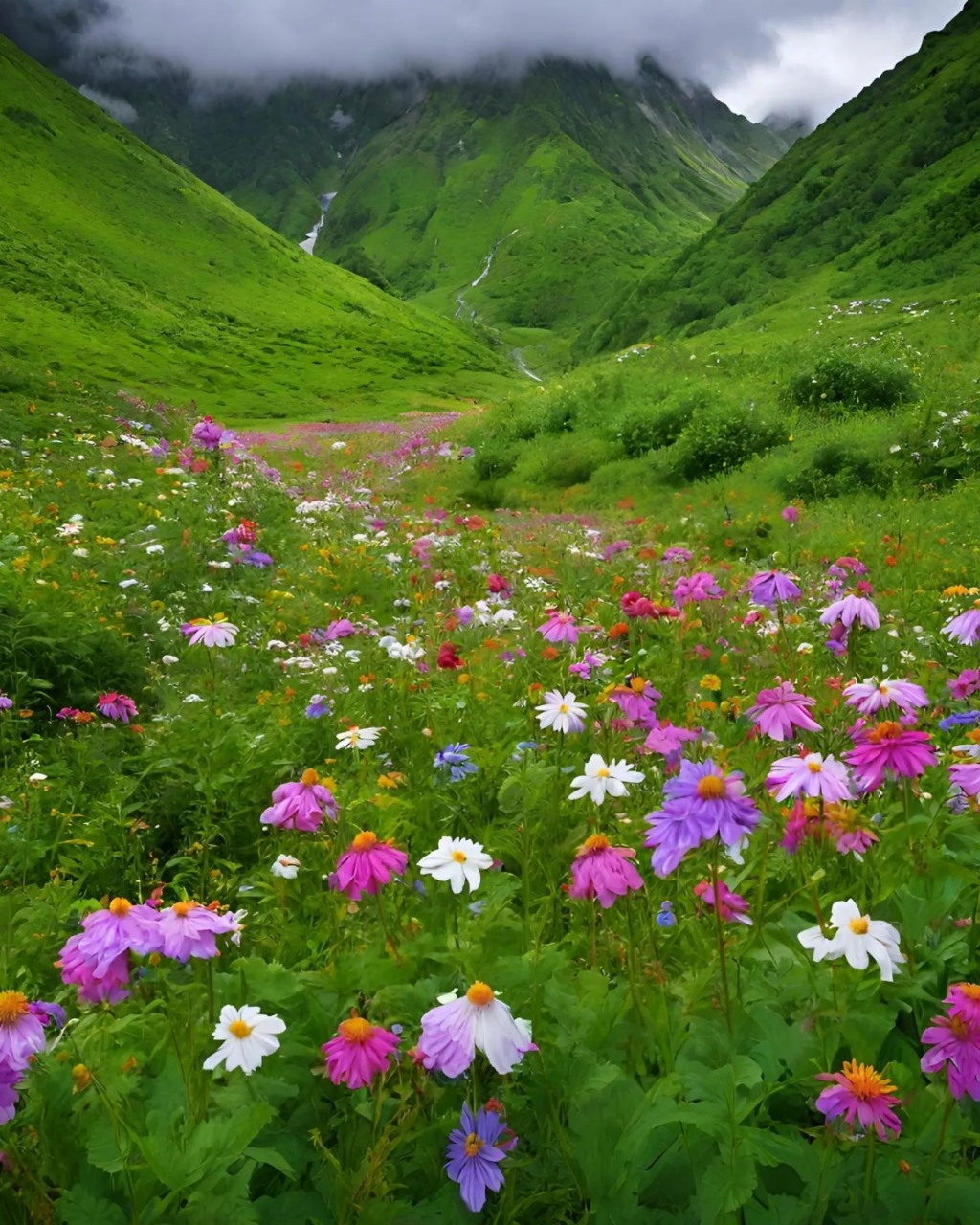
0 Comment